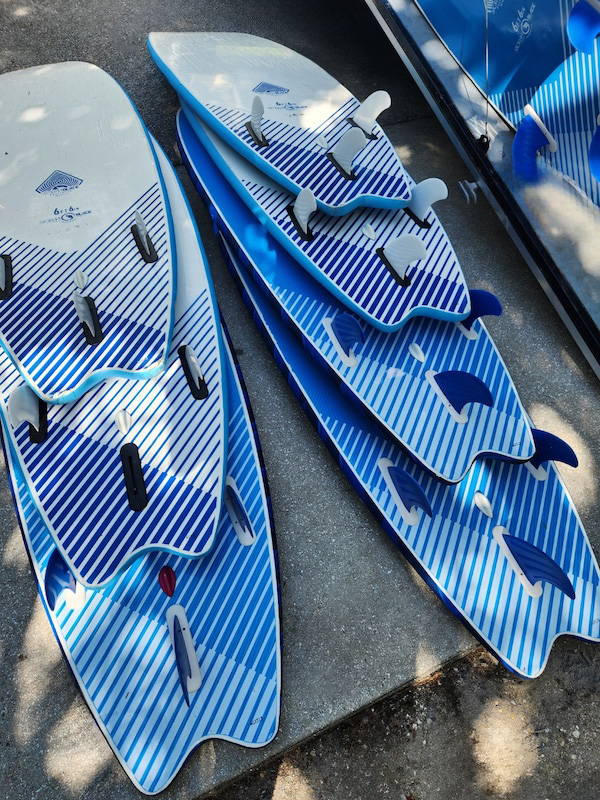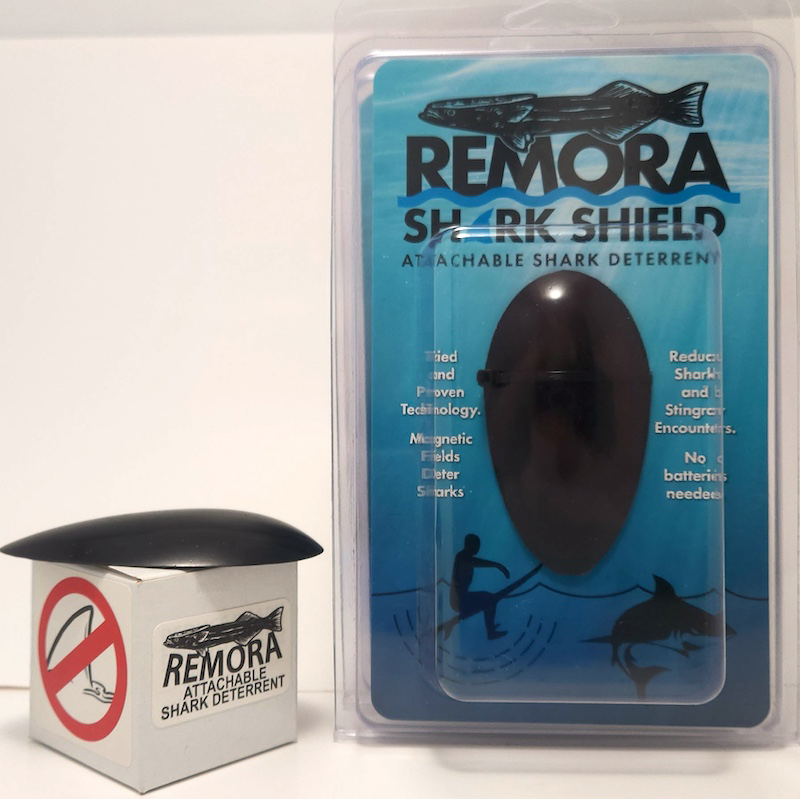Published Third-Party Studies & Research on Shark Deterrent Technology
Since 2005, our shark deterrent technology has undergone extensive testing and validation by marine biologists. The results have been overwhelmingly positive, demonstrating that our device effectively elicits avoidance behavior in various shark species. Through these studies, we’ve been able to prove the technology’s ability to reduce shark encounters safely and ethically. Here are the key species studied:
1. Hammerhead Sharks (Sphyrna mokarran and Sphyrna lewini)
Hammerhead sharks, known for their distinctive head shape, have been studied for their response to our deterrent technology. Both the Great Hammerhead (S. mokarran) and the Scalloped Hammerhead (S. lewini) have shown a clear avoidance reaction, steering away from the magnetic field emitted by our device. This response suggests that our technology can effectively deter these species, which are often found in coastal areas where human activities like surfing and diving occur.
2. Bull Sharks (Carcharhinus leucas)
Bull sharks are one of the most aggressive and dangerous shark species. Their habitat ranges from deep ocean waters to freshwater rivers, making them particularly common in areas where water sports take place. Studies have confirmed that our deterrent technology induces a significant avoidance response in bull sharks, reducing the risk of interaction with humans in both marine and estuarine environments.
3. White Sharks (Carcharodon carcharias)
The Great White Shark, known for its size and predatory nature, is a species of major concern for those in the water. Our research has shown that the device effectively repels Great Whites, which are known to frequent high-traffic areas like beaches and surf spots. This deterrent has been found to reduce the likelihood of shark attacks by influencing their natural behavior.
4. Australian Blacktip Sharks (Carcharhinus tilstoni)
These sharks are commonly found in coastal waters around Australia. Studies have demonstrated that our deterrent technology causes Australian Blacktip sharks to swim away from the area, reducing the risk of encounters with swimmers and surfers in these regions.
5. Sandbar Sharks (Carcharhinus plumbeus)
Sandbar sharks are often found near shorelines and are known to be a potential threat to water sports enthusiasts. Our technology has been shown to be effective in creating an avoidance response from sandbar sharks, preventing them from entering popular swimming and diving areas.
6. Lemon Sharks (Negaprion brevirostris)
Lemon sharks, primarily found in warm, shallow waters, are often encountered by divers and swimmers. Studies indicate that our technology works well on Lemon sharks, encouraging them to alter their course and avoid areas where the device is active, thus reducing human-shark interactions.
7. Grey Reef Sharks (Carcharhinus amblyrhynchos)
Common in tropical and subtropical reefs, Grey Reef sharks are a known presence around popular dive sites. Our technology has been tested and proven to elicit avoidance behavior in Grey Reef sharks, ensuring divers and snorkelers can feel safe in these environments.
8. Milk Sharks (Rhizoprionodon acutus)
Milk sharks are smaller but still present in coastal waters. Research has shown that they too are sensitive to the magnetic field produced by our device, leading to a noticeable change in their behavior as they swim away from the deterrent area.
9. Speartooth Sharks (Glyphis glyphis)
The Speartooth shark is a rare and elusive species, but it has been included in our studies to ensure the technology’s effectiveness across a wide variety of shark species. The results showed that Speartooth sharks also exhibit avoidance behavior, making the device suitable for a broad range of environments.
Conclusion
Our shark deterrent technology has undergone rigorous testing and has been proven to effectively influence the behavior of multiple shark species. By emitting a magnetic field, the device causes sharks to avoid the area, reducing the risk of encounters with humans. This proven technology is an essential tool for anyone engaging in water activities, offering a safe and ethical way to reduce shark-related risks.
These findings are based on studies conducted by marine biologists and researchers since 2005, establishing our deterrent technology as a reliable and scientifically supported solution for shark safety.


